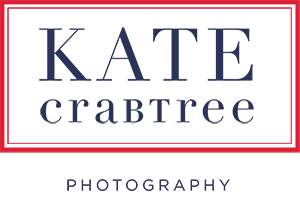Maine Professional Photographer | What’s in My Bag?
A lot of people see my camera, usually when I have a large lens on it, and tell me, “you must be a great photographer!” I know how easy it is to believe that, but it’s not true– although my photography is accentuated by using top of the line equipment, I very much believe that it is more my talent and skill than my equipment that goes into making each photograph. Don’t believe me? You’ve got to look at the shoot a fashion photographer did with his iPhone, which shows how a great photographer can use a low-grade cell phone camera to create stunning images.
Nevertheless, I believe it’s extremely important that I provide my clients with quality service, so I make sure I use high-end equipment that I can depend on to help me create strong work. I thought I’d write a blog post about the equipment I bring with me to a wedding and photo sessions so that I can talk about my equipment, why and when I use each piece, and my backup equipment.
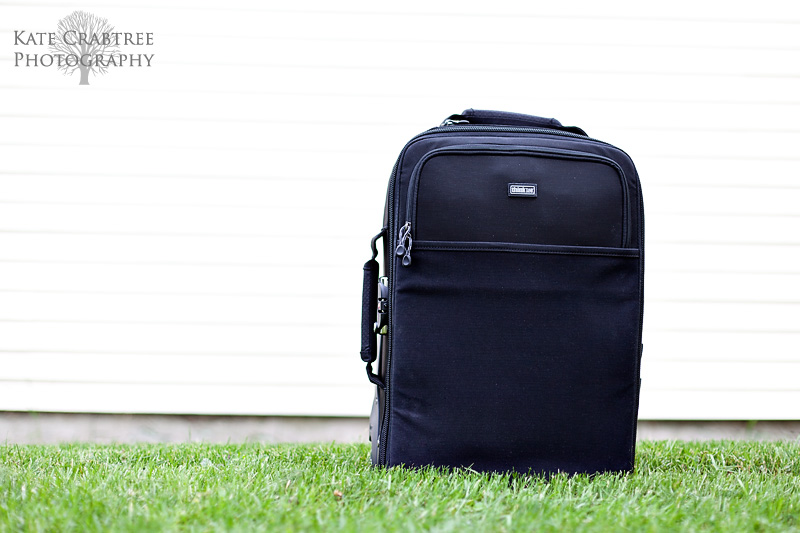
I carry all my gear in this ThinkTank Airport International 2.0 suitcase. Inside are movable soft dividers that allow me to put all my camera equipment in snugly and safely. I used to use a camera bag, but it’s impossible to move all my camera gear in a messenger bag anymore!
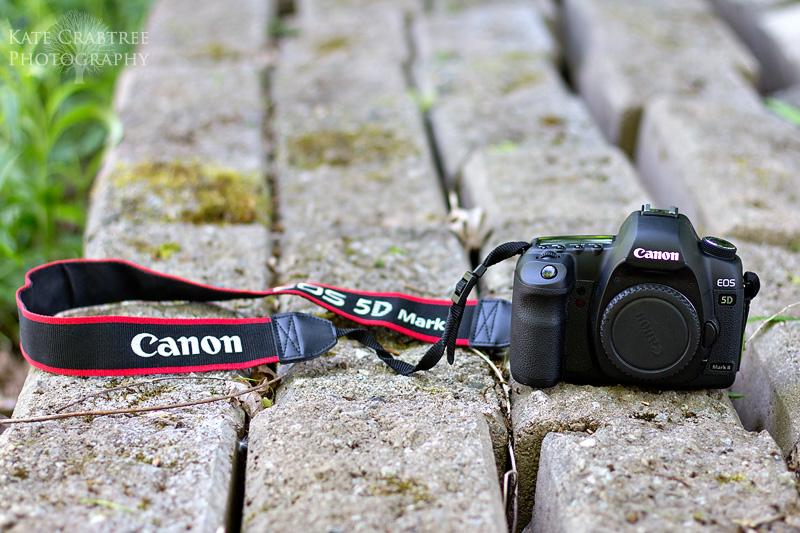
My primary camera body is the Canon 5D Mark II, which is what the majority of wedding photographers use if they use Canon cameras. This is a wonderful camera– it’s full frame, produces gorgeous images, and rocks my world.

This is my backup camera– the Canon 60D. I ALWAYS bring a backup camera to weddings because I do not trust electronic equipment. I’ve never had a camera die on me at a wedding or portrait session (knock on wood), but I would much rather be safe rather than sorry. I’ll sometimes uses the 60D at the same time as my Mark II during the wedding ceremony, especially if it is a short ceremony, so I can use two lenses and get wide and close up shots at the same time without worrying about switching lenses and missing an important moment.

I love the Canon 100mm 2.8 IS L macro. I use this lens for detail shots (the rings, the shoes, jewelry, the flowers, etc), and sometimes for portraits. It’s razor sharp– in fact, it’s one of the sharpest lenses Canon makes. The colors this lens creates are just phenomenal and it’s my second favorite lens in my arsenal.
Before I continue, some basic information:
*The numbers before the mm stand for the focal length of the lens.
*The number after the mm is the widest aperture I can set the lens to. All of my lenses open up to at least 2.8, which is a good thing for wedding photography, as wide apertures allow me to take photos in dim lighting situations. Churches and receptions tend to be on the darker side, so these lenses help me shoot in difficult situations!
*IS stands for image stabilization. It’s a mechanism in the lens to allow me to take photos at slower shutter speeds (which helps when I’m dealing with low light).
*Most of these lenses include L in their name. They indicate Canon’s top of the line lenses and I prefer to work with them.
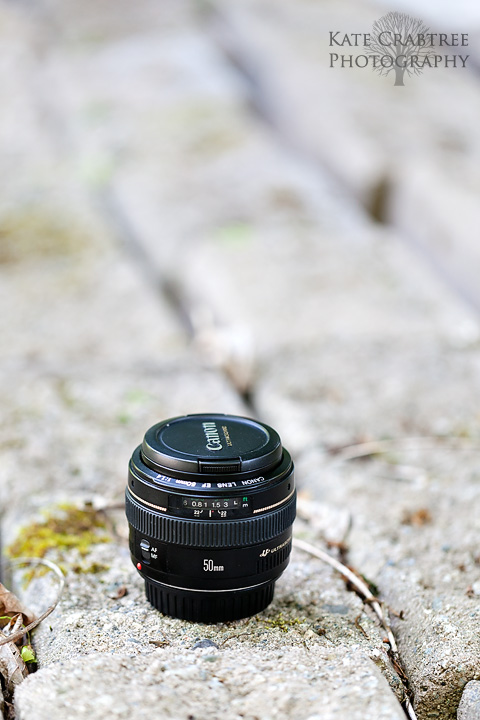
The Canon 50mm 1.4 is my favorite all-purpose lens. I use only this and the 100mm lens during portrait sessions, and I use this lens throughout a wedding day, primarily during the wedding portraits. It’s small, but it does the best out of all my lenses in dim lighting and produces sharp portraits with soft, blurred backgrounds.
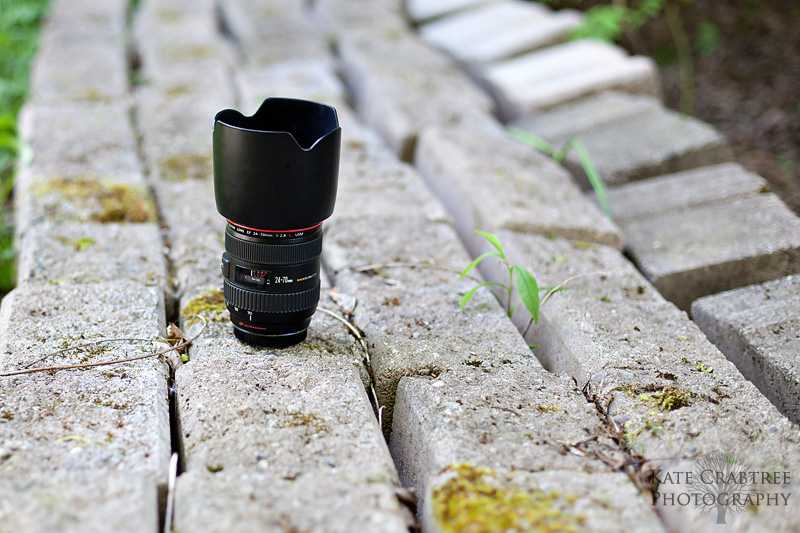
I use the Canon 24-70mm 2.8 L primarily during the reception and the ceremony. It’s a zoom, which allows me to shoot wide but also zoom in a bit toward the telephoto spectrum. What I love about this lens is the versatility it gives me in situations where I can’t predict what will happen at a given time (during the dancing portion of a reception, for example).
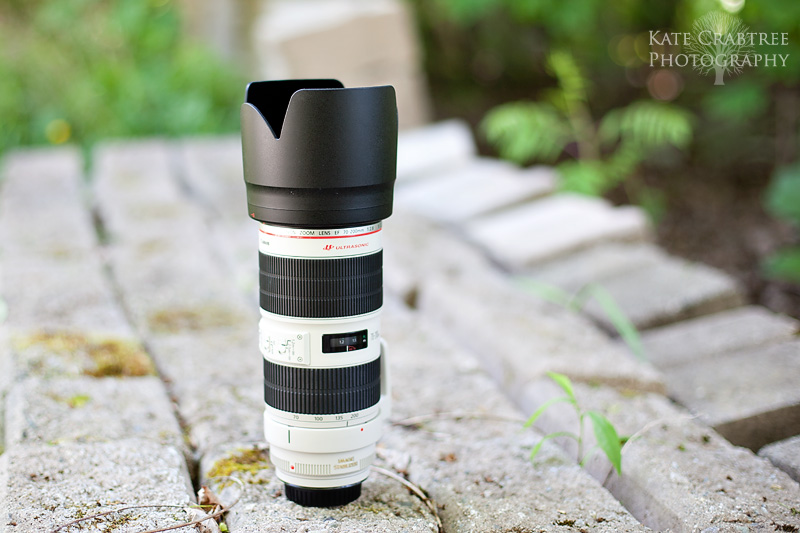
I can’t help it; I partially love the Canon 70-200mm 2.8 IS L II because of how people react when it’s on my camera. It’s huge, heavy, and looks impressive. As it’s a telephoto lens, I primarily use it during the ceremony (so I can zoom in and capture emotion while still keeping my distance), and the first look (for the same reasons– I want my couples to focus on each other, not me!)

The photos that my camera takes are huge files (25-30 MB!), so I bring a LOT of Sandisk 8 GB CF cards with me to ensure that I won’t run out of space. I carry them in the ThinkTank Pixel Pocket Rocket, which folds up as small as a wallet and has a clip that I can connect to a belt loop or to my ShootSac. By having these cards close at hand, I can change my memory quickly to ensure that I don’t miss anything big at a wedding.
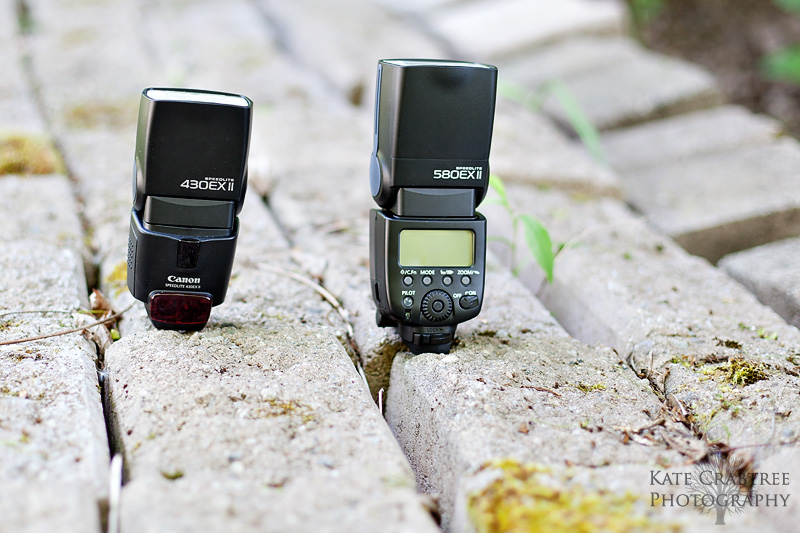
I bring two flashes to weddings for the same reason I bring two cameras– I don’t trust electronics. I primarily use the Canon Speedlite 580 EX II, and use the Canon Speedlite 430 EX II for backup. They provide light in situations where I have little light; I use them during the ceremony (if flashes are permitted), and during the reception.
Other equipment I bring along that hasn’t been pictured:
*The Shootsac – I carry up to three lenses in it in a messenger-type bag while I’m shooting, ensuring that the lenses I need are always at hand.
*Rechargeable AA batteries
*A video light, when extra light is needed for detail shots.
*Camera batteries
*Camera remote and shutter release (I rarely use these during portrait sessions or weddings, but I have them just in case I need/want to do a long exposure and don’t have my tripod right on hand.
*Tripod
*Cleaning supplies for my lenses and camera.
I believe that’s everything! It may be a lot, but it means that I always have the right lens for a shot (my lenses cover 24-200mm, which is a large spectrum) and I’m covered should one of my lenses or cameras fail. It may be mostly my talent and hard work that produces the images on my site, but I like to believe that my photography equipment helps with my consistency and reliability. It’s important to me that my clients feel confident that I provide solid service and that they can feel confident that I can still provide great results if a piece of my equipment fails.
